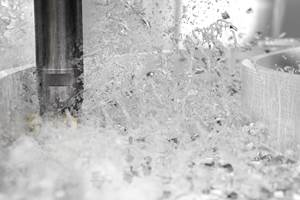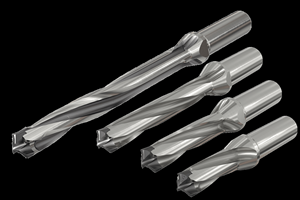Use Plunging to Increase Metal Removal Rates
Recent cutting tool innovation—as well as new CAM programming techniques—make plunging a more popular approach.
Plunging—or as it has been recently called in the Midwest, stomping—typically has been an approach saved for long reach roughing applications. When performing roughing applications there are many ways to get the job done—from basic “Z” level roughing using conventional methods (large depth-of-cut, slow feed) to the high speed/feed methods (shallow depth-of-cut, increased feedrates) applied when using modern technologies. For a variety of reasons (programming, power consumption, etc.), plunging is usually turned to only when other methods have proven ineffective/problematic.
Recent cutting tool innovation, as well as new CAM programming techniques, should make plunging a more popular approach, especially on older machine tools that lack the ability to operate at high feedrates.
CAM Programming for Plunging
One of the major roadblocks when attempting to plunge mill is programming.
Toolpath generation for plunging applications can be tedious because most CAM packages have lacked user-friendly options with the ability to adapt to various workpiece geometries (2-D, 3-D, etc.), and plunger styles (side cutting, center cutting, etc.).
An important programming technique for side plunging is the ability to perform some type of angular retract at the bottom of each plunge (see Figure 1). This angular retract becomes necessary when the forces acting on the plunger push it away from the part. What can happen next—without the angular retract—is insert failure due to interference with the workpiece as the tool rapids out of the part.
Cutter Design Improvements: Handling Forces
In side plunging applications, the forces acting on the cutter will cause the cutter to push off/away from the workpiece. How much the cutter deflects is based on a number of factors: tool engagement, feedrate and the rigidity of machine tool to name a few. The geometry of the cutting tool and insert will also greatly affect these forces and this is an area of recent improvement for a new side plunger (see Figure 2).
The ability to press sophisticated carbide inserts has enabled the development of a plunger that cuts using less force and therefore reducing deflection. In most instances, this new technology eliminates the need for the aforementioned 45-degree retract at the bottom of each plunge and programming becomes much easier by allowing the use of the machine tools canned programs for drilling (G81, G85), especially for simple two-workpiece geometry.
Inevitably, some bending forces will result and the insert will engage small amounts of material during retract motions. With this in mind, side relief was added with lead angle, which gives the tool/insert the ability to handle small amounts of material during retract (see Figure 3).
Advantages of Plunging
Machining the workpiece from top to bottom at given intervals (i.e., “Z” level roughing) is the most popular method used for roughing. Recently, machine tools and cutting tools capable of high speed/feed machining have increased the productivity of “Z” level roughing.
This approach can have its limitations when workpiece geometry, machine tool or workholding limits the ability to operate at constant high feedrates (sometimes operating at 200 to 300 inches per minute feedrates). When any of the aforementioned occurs, the advantages of plunging include:
Constant Engagement
When using the Z level machining approach, chip loads (IPT) increase and decrease as variations in radial and axial engagement occur. With plunging, although radial engagement and step-over varies, a constant chip load is maintained.
Optimized Toolpaths
When compared to the Z level approach, plunging is usually a more direct approach requiring less movement (linear inches of machining) to machine a given area. This is especially true when encountering geometries that require multiple XY directional changes (such as a pocket with support pillars).
Optimizing Machine Tool
Plunging removes large amounts of material while moving at relatively low feedrates (more than 50 ipm would be unusual). By implementing plunging, shops with older machine tools can achieve metal removal rates that compare to—and sometimes exceed—newer machine tools running with a high feed approach.
Handling Interrupted Cutting Conditions
In many cases when encountering interrupted cutting conditions, one is forced to reduce the cutting parameters in order to reduce/eliminate the chances of chipping or fracturing inserts. Plunging tends to handle these conditions with more consistent results. This could be attributed to the approach into the material being axial and to the consistent chip load per tooth maintained during plunging.
Dealing with Cutting Forces
The axial forces of plunging typically allow aggressive operating parameters with less concern of moving the workpiece.
Summary
Advanced pressing technologies are leading to the development of cutting tools that reduce cutting forces, are stronger in design and make better use of the carbide raw materials used to make them (i.e., saves money). Plunging will gain in popularity as shops learn they can increase efficiency through greater metal removal rates across a wide variety of applications and materials, as well as increase the capacity of older machine tools.
Related Content
How to Overcome Cutting Tool Vibration
Advanced indexable milling cutting tool design provides secure, predictable machining, increased metal removal rates, reduced cycle times and fast changeovers.
Read MoreHow to Overcome Deep-Hole Drilling Obstacles in Mold Machining
Keep up with the newest tooling innovations to overcome holemaking and finishing challenges.
Read MoreModular Tooling Systems Enable Versatility in Hole-Drilling Operations
The versatility of replaceable cutting edges offers users the ability to adapt to varied operations.
Read MoreTreatment and Disposal of Used Metalworking Fluids
With greater emphasis on fluid longevity and fluid recycling, it is important to remember that water-based metalworking fluids are “consumable” and have a finite life.
Read MoreRead Next
Plunge Milling Saves Time on Big Mold Cavities
By using a plunge mill, what used to take four hours now takes only 30 minutes—and stretches mold feedstock.
Read MoreReasons to Use Fiber Lasers for Mold Cleaning
Fiber lasers offer a simplicity, speed, control and portability, minimizing mold cleaning risks.
Read MoreHow to Use Continuing Education to Remain Competitive in Moldmaking
Continued training helps moldmakers make tooling decisions and properly use the latest cutting tool to efficiently machine high-quality molds.
Read More
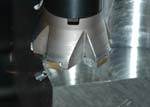



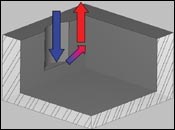
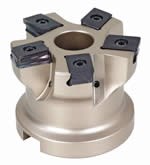







.png;maxWidth=300;quality=90)



